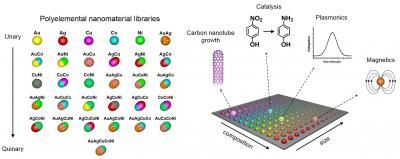Prototype of a portable detector for protein diagnosis
Pocket-sized HIV-Diagnostic Lab
"POCKET" (from portable and cost-effective) is the prototype of a novel portable and battery-driven protein detector that has been developed at Harvard University in Cambridge, USA. This simple and inexpensive, yet reliable diagnostic system for infectious diseases is ideal for broad use in poor countries and could improve the medical care available there.
"POCKET consists of a diagnostic chip for immunoassays only a few square millimeters in size, and a small, simple detector unit," explains George M. Whitesides, one of the most prominent pioneers of micro- and nanotechnology. "Current laboratory diagnostic processes are mostly not suitable for developing nations; aside from the high cost and complex equipment, the necessary infrastructure, such as a power supply, is often lacking." The immunoassay-an HIV test was developed as a prototype-is carried out in channels on the chip that are only about 2 mm in width.
A blood sample is pipetted into each channel. In spreading through the channel, it reaches a stripe to which protein fragments from the HI virus have been attached. If the blood sample contains HIV antibodies, they recognize the protein fragments and bind tightly to them. A second type of antibody is then sent through the channels in order to mark the bound HIV antibodies. These second antibodies, which are coupled to tiny gold spheres, recognize the HIV antibodies and stick to them. In the next step, a solution of silver nitrate and an oxidizing agent is applied. Where the gold-adorned markers are bound, the gold catalyzes the oxidation of the silver ions to metallic silver, which deposits onto the walls of the channels-a self-amplifying reaction, because the silver then also catalyzes the oxidation of more silver ions. This is where the detector comes in. A small red laser diode shines light through the channels. On the other side of the chip, an integrated circuit with a photodetector registers how much the light is diminished by the silver layer. This allows the number of HIV antibodies to be quantified, just as precisely as laboratory methods but much more quickly. A liquid crystal display shows the results. "A 9 V battery is sufficient to power the detector, and its components are commercially available for only $45," reports Whitesides. "The chip is produced by "soft lithography", a microtechnical method well suited to mass production."
Topics
Organizations
Other news from the department science

Get the chemical industry in your inbox
By submitting this form you agree that LUMITOS AG will send you the newsletter(s) selected above by email. Your data will not be passed on to third parties. Your data will be stored and processed in accordance with our data protection regulations. LUMITOS may contact you by email for the purpose of advertising or market and opinion surveys. You can revoke your consent at any time without giving reasons to LUMITOS AG, Ernst-Augustin-Str. 2, 12489 Berlin, Germany or by e-mail at revoke@lumitos.com with effect for the future. In addition, each email contains a link to unsubscribe from the corresponding newsletter.



























































